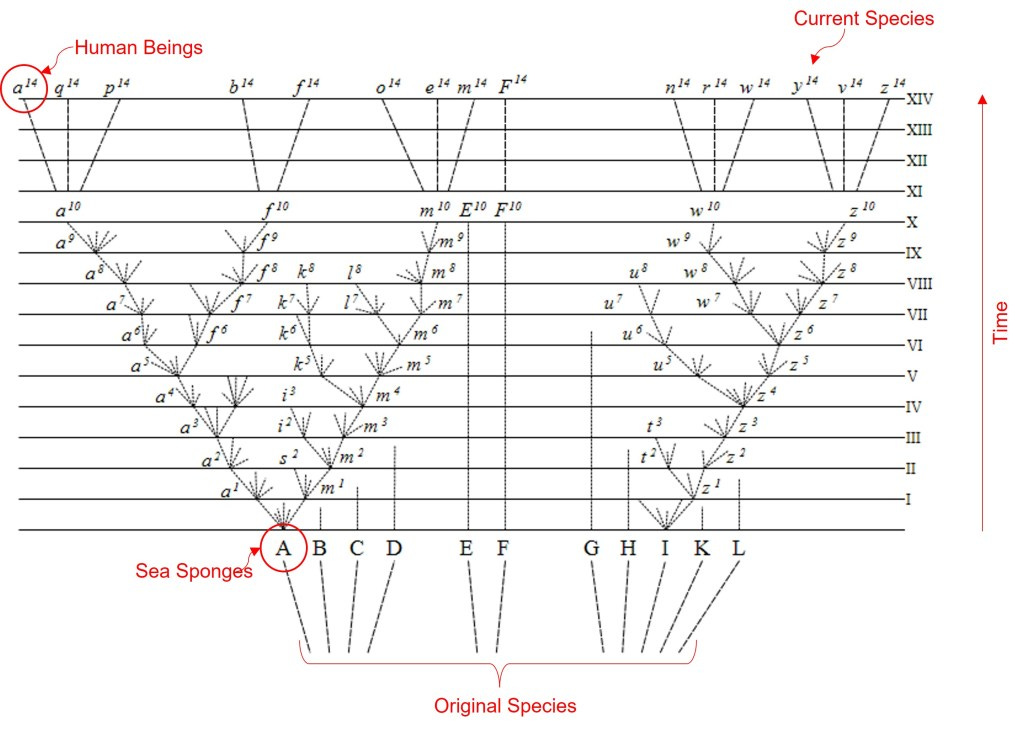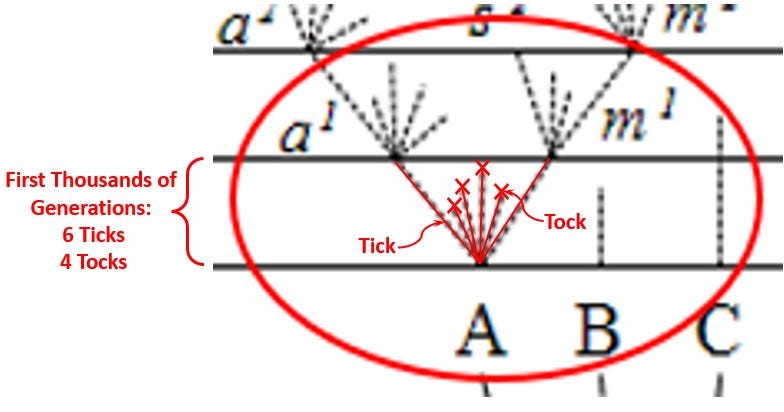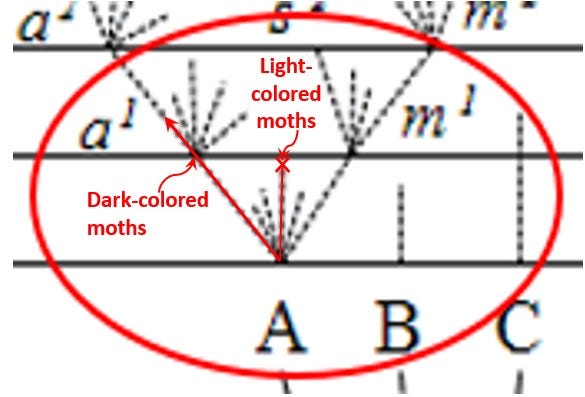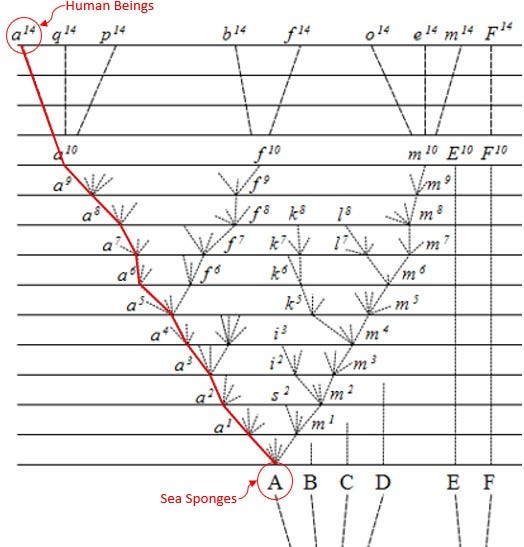The Clockwork of Evolution
Why natural selection does not explain anything of current living beings.
If evolution is true, then both genetic variation (descent with modification) and natural selection must explain the existence of every living organism.
Evolution, if true, operates without guidance or purpose in nature like a wound-up clock without numbers. The "tick" of genetic variation and the "tock" of natural selection operate unattended like clockwork to produce all of the earth's current living things.
Tick and tock. Both are necessary for the hands of a clock to make progress through time. The endless cycle of the hands of time would come to an abrupt stop if either of the tick or tock of the nature’s clock likewise ended.
What about the clockwork progress of evolution? We are told that the two evolutionary processes of descent with modification and natural selection have operated senselessly and continuously throughout time since that first replicating life form appeared.
Tick: Genetic variation results in descent with modification of a child organism who inherits modifications.
Tock: Natural selection operates on the endless stream of modified child organisms, sorting out among the "good" genetic variations and the "bad."
You know the bad variations, don't you? Every example of natural selection offered up as evidence of evolution in nature involves bad variations inherited by unlucky organisms.
Remember the genetic variations that produced green bugs—tick—among brown bugs, such that the more visible green bugs got eaten by birds—tock? The clockwork tick-tock of evolution resulted in the brown bugs enjoying "differential reproduction," as they say, in the population of bugs.
Or the moths born in industrial England with genetic variations that made some of them light-colored—tick—such that they, also, got eaten by birds—tock? Those lucky dark-colored moths hiding on tree trunks saw their population numbers change.
And what about the giraffes that were born with short necks—tick—and starved because they could not reach leaves high in trees—tock? We are told that this is how today's giraffes got their long necks.
So much for the unlucky organisms with inherited "bad" variations. Their "tick" set them up for the "tock" of death.
Tick, tock ... tick, tock ... tick, tock, . . . The clockwork of evolution proceeds without mercy or meaning as it relentlessly disposes of the those less fit to survive in favor of the the fittest.
But what about those not disposed of by the "tock" of evolution's clockwork? That is, how does nature's clockwork operate for the brown bugs, the dark-colored moths, the long-necked giraffes, and all the other lucky ones who descend with favorable variations?
Let's examine the clockwork of evolution using the only diagram from On the Origin of Species. Below, with our annotations, is how Darwin illustrated the clockwork "tick" and "tock" of his theory. Our annotations in red and our explanation derive from Darwin’s description of this "tree of life" in Chapter IV of Origin of Species.
As we look at Darwin’s diagram, the “tree” grows in time from bottom to top (as indicated by our arrow at the far right) going back 420 million years to the Silurean period. The Silurean period coincides with the existence of sea sponges, from which human beings are said to have evolved.
According to Darwin, each horizontal line in the diagram (numbered I to XIV), represents "a thousand generations; but it would have been better if each had represented ten thousand generations." Further, Darwin explains, “Let A to L represent the species of a genus large in its own country . . .” And, on the top line a14 through z14 represent current species. For illustration, we will assign "A" as our ancestral sea sponge, and “a14” as current-day human beings.
Not surprisingly, Darwin's tree of life shows what modern "phylogenetic trees" show: a continuous line of descent from early life forms, e.g., Species A, to current life forms, e.g., Species a14.
Let's examine Darwin's tree more closely. Consider a close-up of the first generation of "descent with modification," i.e., genetic variations, that is a representation of variations produced between the first two time periods from Species A.
Each "ray" of dashed line represents an ancestral line of organisms that descended from Species A in the first thousand generations of time: they are the "ticks" of the evolutionary process of descent with modification.
Each of our annotated "X's" denotes the end by death of organisms in certain lines of ancestry: they are the "tocks" of the evolutionary process of natural selection.
In view of one of the examples of natural selection provided to us, such as the light-colored and dark-colored moths, we can annotate Darwin's diagram as follows:
The unlucky light-colored moths, having inherited variations that render them more visible to hungry birds experience both the "tick" and the "tock" of evolutionary processes: descent with modification and natural selection.
But what about the lucky dark-colored moths? There is no "tock" for their "tick"! They continue on in time heading to a1, and then through more generations to a2 having received only the "tick" of evolution.
For the dark-colored moths there is no "tock" for their "tick." How can this be? What did natural selection do for the continuing line of dark-colored moths?
Let's examine the question by considering not only dark-colored moths, but all surviving organisms, including human beings. Below we again show a portion of Darwin's tree of life highlighting the line from sea sponges to human beings.
Consider the meaning of the continuous red line showing the unbroken descent with modification from our sea sponge grandparents to us.
In the continuous descent from sea sponges, human beings experienced no evolutionary "tocks," only a continuous line of "ticks!" If evolution is true, every ancestor of every current plant and animal never received evolution’s tock. We are all the lucky dark moths, the lucky brown bugs, and the lucky long-necked giraffes all the way down!
Not one tock in our human lineage of innumerable ticks from sea sponges. This means that there was not one instance of the tock of natural selection in our human evolution. Or in the evolution of any other current living thing: Natural selection played no role in the evolutionary development in the continuous line of descent of every living thing.
This further means that evolutionary theory as an explanation for every current living thing—including human beings—must rely solely on "ticks" alone.
Tick, tick, tick . . .
Think about it.
For more information and a more complete treatment of the role of natural selection, please read The Natural Selection Paradox. Enjoy!
Photo modified from photo by Akram Huseyn on Unsplash






